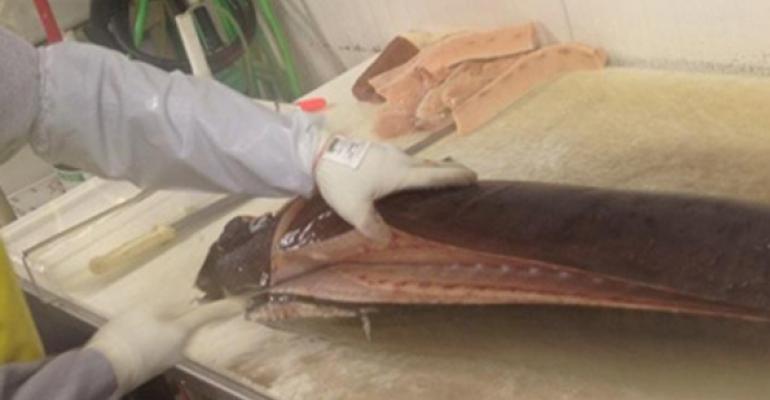RELATED
• New York chef serves up unusual seafood
• Chefs, consumers embrace seafood charcuterie
• More restaurant industry seafood trends
When Union Square Café executive chef Carmen Quagliata wants to serve the freshest possible swordfish, he doesn’t call a seafood distribution company. Instead, he rings a Florida fisherman he was introduced to by a friend. While most swordfish is caught and sits on ice for several days, Quagliata’s source line catches, processes, packs in ice and ships the swordfish to deliver to the Café’s door in about 36 hours.
“It’s just about building relationships with people,” said Quagliata. “That’s how you find good seafood.”
Of course, that doesn’t mean that Quagliata never orders from big suppliers. He does for some items, such as scallops. But even then, he says, he only works with suppliers with whom he has a strong relationship.
As the demand for seafood on menus grows and the definition of “good” seafood becomes more complex, many chefs and operators are discovering the best way to get seafood that meets their standards is through relationship-focused sourcing. “Sourcing fresh fish can be difficult,” said Maryanne Rose, president and CEO of SpenDifference. “It’s not just looking at the [available or sustainable fish] list; it’s getting to know the buyer.”

Formed in 2007, SpenDifference acts as a cooperative buying club that helps its clients — all midsize chains with 100 or more units — to operate like larger chains to reduce purchasing costs and improve their overall business. “Fresh seafood is one of the hardest categories we manage,” said Rose. “My advice is to work with suppliers hand-in-hand and let them help source it. [Operators and chefs] need to partner with them.”
Working in partnership is vital for Nashville, TN-based Captain D’s, a 527-unit chain that sources about 500,000 pounds of fish each week. “Our suppliers are extremely important to Captain D’s,” said Janet Duckham, vice president of purchasing and quality. “All it takes is one poor piece of product, one bad meal.”
To prevent substandard product from gracing the table at one of its hundreds of locations, Duckham says Captain D’s has developed mutually beneficial relationships with a diverse supplier base. “We communicate our expectations up front. [Suppliers] have to demonstrate [they’re] able to deliver,” said Duckham. “We also want to be loyal to our suppliers and reward them.”
While some operators prefer to diversify, the Joe’s Crab Shack concept has found success working closely with a single trusted supplier. The Crab Shack, a 116-unit chain operated by Ignite Restaurant Group, sources about 400,000 pounds of seafood weekly, 90 percent of which is sustainable.
“We believe overfishing is the biggest concern facing the seafood industry — including retailers and restaurant operators,” said Ellen Clarry, senior vice president of quality assurance and global supply chain for Ignite Restaurant Group. “We overcome this by using suppliers that are committed to sustainable fishing.”
Relationship procurement is also key for chef Rodney Murillo of the Davio’s Northern Italian Steakhouse chain. But for Murillo, it’s not just about knowing a buyer who can get him what he wants, it’s about knowing a buyer who will continually teach him what he doesn’t know, helping to navigate the ever-changing waters of the seafood world.
“As chefs we don’t have a lot of time to be sourcing during the day,” said Murillo. “Education is very important. [We want] a seafood company that provides us with more information.”
What Murillo loves about his current supplier — a large, Boston-based outfit that ships to his five restaurants across the country — is the weekly emails. Each week, Murrillo receives an update on what’s safe and what’s plentiful, as well as what will be available in a few months so each of his restaurants can plan for catered events.
“We’ve gone through many [suppliers]. Some did have good quality,” said Murillo. “However, the programs were not good enough, and couldn’t provide us with enough information.”
Quagliata agrees that continuing education is an important part of good source relationships. “Working with purveyors is a away to learn and grow,” said Quagliata. “It’s amazing what’s available, what’s out there.”





